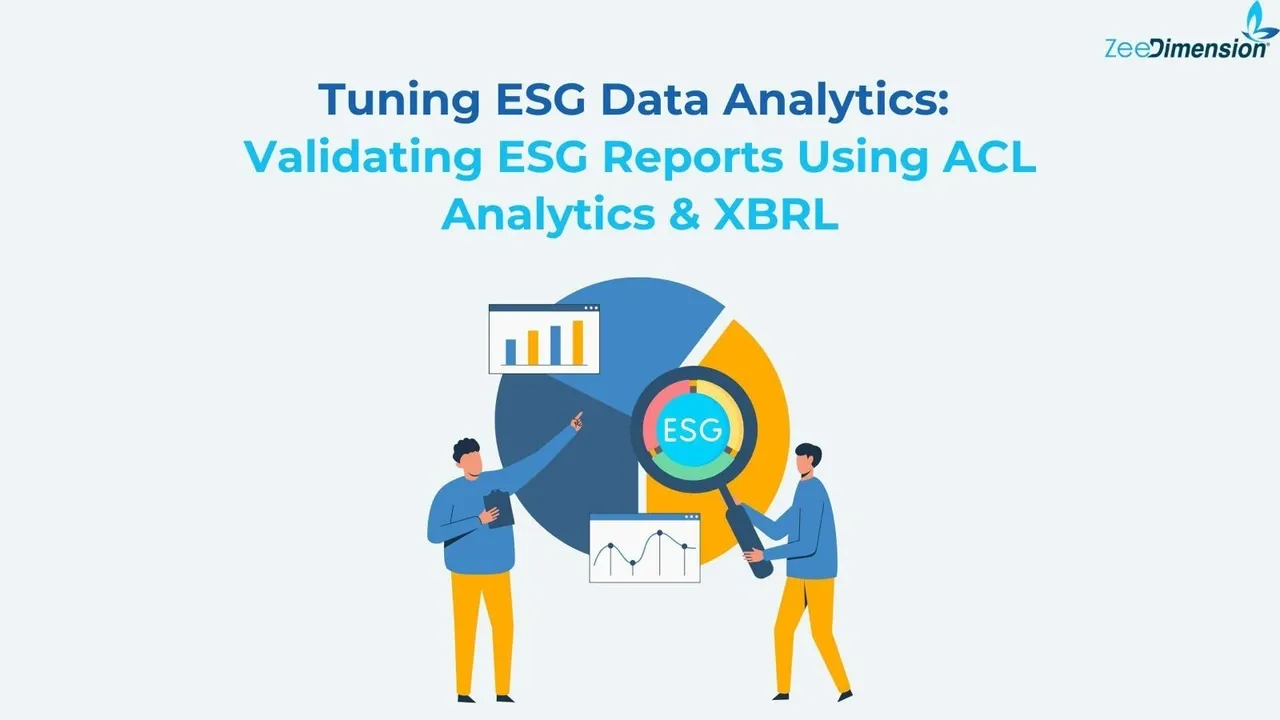
How Can We Ensure Accurate ESG Disclosures?
By comparing machine-readable ESG reports with raw data, we can verify their accuracy!
Why ESG Data Accuracy Matters
Accurate ESG data drives investment decisions, ensures compliance, and builds trust. Verifying disclosures against raw data through audits and validation prevents risks and enhances credibility.
XBRL – The Future of ESG Reporting
XBRL is a machine-readable format that standardizes ESG reporting using tagged data for financial and sustainability metrics. By leveraging XBRL, we aim to extract ESG data efficiently and validate it against raw operational data for accuracy and reliability.
Step 1 – Extract ESG Data from XBRL
With ACL Analytics, we seamlessly extract ESG-reported values from an XBRL file, structuring key metrics like carbon emissions, water consumption, and board diversity for deeper analysis. A simple ACL script imports the data, ensuring it’s ready for meaningful insights.
Step 2 – Extract Raw ESG Data from Source Systems
Raw ESG data comes from diverse sources such as ERP systems (e.g., SAP, Oracle), IoT sensors for real-time environmental monitoring, and HR and finance systems tracking social and governance metrics. Using an ACL script, this data can be imported and structured for analysis. For example:
OPEN “Raw_ESG_Data.csv”
IMPORT DELIMITED TO “raw_esg.acl”
FIELDS CarbonEmissions, WaterUsage, BoardDiversity
Once imported, the raw ESG data is ready for comparison and further analysis.
Step 3 – Comparing ESG Reported vs. Raw Data
In Step 3, we leverage ACL Analytics to merge ESG-reported data with raw data. By matching datasets using CompanyName and FiscalYear, we generate a comparison file that simplifies identifying discrepancies between the two sets.
Step 4 – Identifying Data Discrepancies
We calculate differences between reported and raw ESG figures.
DEFINE FIELD CarbonDiff = CarbonEmissions_reported – CarbonEmissions_raw
DEFINE FIELD WaterDiff = WaterUsage_reported – WaterUsage_raw
DEFINE FIELD DiversityDiff = BoardDiversity_reported – BoardDiversity_raw
Then, we flag significant deviations:
FILTER CarbonDiff > 5 OR WaterDiff > 10 OR DiversityDiff > 2
Outliers indicate potential reporting issues!
Step 5 – Root Cause Analysis & Data Tuning
ESG reporting discrepancies are typically caused by data entry mistakes, inconsistent aggregation methods, and delays in real-time data updates. By applying data tuning, these issues can be addressed, leading to more accurate, compliant, and trustworthy reporting.
Key Takeaways
XBRL ESG reports organize data in a machine-readable format, while ACL Analytics checks disclosures by comparing raw data with reported figures. This approach highlights discrepancies, ensuring better accuracy and transparency. Want to learn how ESG data analytics can transform your reporting? Let’s connect!







